What is a Labour Market Impact Assessment (LMIA)?
A Labour Market Impact Assessment (LMIA) is a document issued by Employment and Social Development Canada (ESDC) assessing the impact of hiring a foreign national in Canada. A positive LMIA will demonstrate that a foreign worker is required to fill the position. Additionally, it will demonstrate that no Canadian citizen or permanent resident is qualified for the position. A confirmation letter is another name for a positive LMIA.
The LMIA is a way for Canadian employers to hire workers internationally. Businesses suffering short-term labor shortages might use the Temporary Foreign Worker Program if only no Citizens or permanent residents seem to be capable of filling the post. One must follow the program’s rules as an employer employing Temporary Foreign Workers. ESDC possesses a number of methods put in place to verify any employer’s obedience to the platform’s standards, and those who do not adhere would then face penalties.
Employment & Social Development Canada (ESDC) evaluates every LMIA request to ensure that there is still a demand for just a temporary foreigner and that no Canadians / permanent residents is accessible or suitable to fill the position. The LMIA is normally only genuine lasting six months after it has been issued, and the employee will apply for a work visa (or permanent residency, depending on what type of LMIA received) before it expires.
The Five Labour Market Streams
Depending on the type of organization you are recruiting via, the procedure and paperwork for an LMIA will differ. Under the TFWP, ESDC has described 5 labor market channels:
Caregiver Program
Primary Agriculture Stream
Global Talent Stream
Low-wage Stream
High-wage Stream
High Wage Labour Market Impact Assessment
The pay is provided to the foreigner will decide if the LMIA is handled through the high-wage or low-wage channel. If such proposed compensation is equal to or higher than the provincial or territorial hourly median pay, you will need to apply through the high wage stream.
A proposal for full-time employment to a temporary foreigner should be made (at least 30 hours a week). Organizations should give proof of its business validity and that the employment proposal is legitimate for first-time LMIA submissions. When an employer receives a positive LMIA during 2 years of filing, they are not needed to give proof of the company’s authenticity or the employment offer’s authenticity. If required, ESDC might demand more accompanying papers at any moment.
Transition Plan
The high-wage LMIA entry is incomplete without a transition strategy. It outlines what a company will do to recruit, maintain, and equip Canadians and permanent residents in terms of reducing dependency on the temporary foreign worker system.

To fulfill the requirements of a transition plan, employers must either:
Three separate efforts to attract, employ, or educate Canadians and permanent residents, and also an extra activity for disadvantaged minorities such as recent immigrants, native communities, and individuals with disabilities.
One effort to help a temporary foreign worker transfer to the status of a permanent resident.
The only scenario in which you would be exempt from this plan is if it is not a long-term position or there are no available workers.
Effort to Recruit
Prior to actually hiring a foreign worker and filing for an LMIA, employers must perform recruiting efforts to acquire a Canadian or permanent resident. Successful LMIAs begin by effective recruiting efforts, as well as any deviations are costly.
Following three months of completing an LMIA application, at least three recruiting activities should be completed for 4 straight weeks. This job vacancy must be placed on the Government of Canada’s Job Bank as well as two additional platforms to meet the minimum recruiting standards.
One of the three methods must be in place as the LMIA application is being assessed till the date of decision towards your application.
Low Wage Labour Market Impact Assessment
he role being offered must be a full-time position accumulating at least 30 hours per week.
Individuals must apply via a low-wage stream when the rate of pay provided for such post is less than the provincial average hourly rate. Low-wage jobs have drastically different needs than high-wage jobs and are often more difficult.
Cap
Unless some exemption exists, businesses are limited in the number of temporary foreign employees who are recruited inside a low-wage role at a single job site. The limit applies to businesses with 10 or more workers.
The Reason the cap was made was so that employers could over time find ways to transition their staffing and workforce to a Canadian based group reducing the need for foreign workers.
When an organization hires a foreign national inside a low-wage post following June 20, 2014, the amount of temporary foreign employees in a low-wage position is restricted at 10%.
When a company hires a foreign worker inside a low-wage position before June 20th, 2014, they are accountable to a 20% limit on foreign nationals in low-wage professions or the business's stated projected limit (whichever is lower).
Recruitment
To achieve the low-wage position’s minimal advertisement criteria, the business must engage in at least three distinct recruitment initiatives, which include:
A job advertisement at the Job Bank of Canada
2 separate methods of recruitment compliant with the occupation being advertised. These methods have to target minor groups such as Indigenous, disabled persons, etc.
These recruitment efforts must have been made 3 months prior to your submission of your LMIA application to prove that you have tried to find workers. Also, one of your methods must be in place as you apply for your LMIA.
Job Match
Businesses must utilize the job matching feature in the same way that high-wage positions do. Businesses can see anonymized profiles of job applicants who fulfil all qualifications outlined in the position offer, then rate individuals on a five-star scale.
You must invite all job candidates who are rated two stars or higher within the first 30 days of the job post becoming online for low-wage employment.
Book a meeting to know about other low-wage employment options and to apply for an LMIA
Owner/Operator Labour Market Impact Assessment
One of the less well-known recruiting exclusions inside the LMIA category seems to be the owner-operator. Individuals who work for themselves have the option of starting a business or purchasing an existing one. To be qualified, the owner/operator should show that they have been vital to the firm’s day-to-day operations and that they will be participating actively in business operations and customer service in Canada.
Ownership does not easily entitle a foreign national; in order to qualify as an owner-operator, a foreigner should also have a dominant stake in the firm or have to be unable to be fired. ESDC would analyze the overall validity of the employment offer, as well as create jobs, development, and strategies that contribute to Canadians. The stage of the deal, the soundness of the marketing strategy to obtain a stake in a company as just an owner/co-owner, the proportion getting transferred, though not all, and the aim to employ or retain Canadian personnel are all important considerations.
ESDC would no longer recognize anticipating conditions when forming a new firm, therefore start-up enterprises or company owners are unlikely to be permitted. Remaining proactively involved in a business is an important need, according to ESDC. This implies that before you could even apply, you would have to have a physical address, workers, and clients. LMIAs of NOC 00 roles will also need to show senior personnel and supervisors on the payroll. At the date of the LMIA submission, these jobs must exist, be filled, and be prepared to be supervised by a NOC 00 role. Anticipatory scenarios will no longer be considered by ESDC.
Owners/operators have a small edge in that they will not be required to engage in recruitment strategies, but they should still prove through a transition plan that their admittance will result in the creation and retention of employment opportunities or the transfer of skills to People in Canada and permanent residents.
It’s crucial to remember that a good owner/operator LMIA does not ensure the issue of a work permit, however, it does contribute 50 to 200 points towards express entry candidates.
CLIENTS REVIEWS
What Our Happy Customer Says
About Land2Air Immigration Services
2102
+
Temporary Applications
1463
+
Permanent Residencies
713
+
Refugee applications
1241
+
Citizenships





